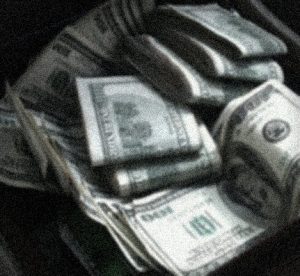 Here’s an intriguing case of how two journalists looked at the same data and led a story with completely different points of view.
Here’s an intriguing case of how two journalists looked at the same data and led a story with completely different points of view.
The basic story is that the company Bankrate did a survey of 1,000 people, asking whether they had more credit-card debt or emergency savings. Wouldn’t that seem hard to spin? Let’s see what the writers did.
Robin Saks Frankel, at Bankrate, gives us this headline:
On the other hand, at MarketWatch, we see this across the top of the page:
Lest you think that the difference lies simply in the headline, the opening paragraphs of these stories bring the headlines’ announcements to the fore.
So which story is right? In fact, both of them are. What happened is that Bankrate saw the glass half full, while MarketWatch dwelled on the glass half empty. Frankel, in my opinion, deserves higher marks since the 58% number is a high-water level while the “1 in 5” figure is rather old news.
That MarketWatch writer provided no context for the “1 in 5” reference, so we have no way to know if that is more than last year or less or about the same. The Bankrate story lets us have that context, explaining that the 21% of Americans with more credit-card debt than savings is the lowest in the last eight years. I guess if the MarketWatch writer–whose name is mercifully not attached to the story–had included that tidbit, it would have sort of undercut the headline.

Glass Half Full or Empty?
The basic story is that the company Bankrate did a survey of 1,000 people, asking whether they had more credit-card debt or emergency savings. Wouldn’t that seem hard to spin? Let’s see what the writers did.
Robin Saks Frankel, at Bankrate, gives us this headline:
58% of Americans have more emergency savings than credit card debt
On the other hand, at MarketWatch, we see this across the top of the page:
1 in 5 Americans have more credit-card debt than savings
Lest you think that the difference lies simply in the headline, the opening paragraphs of these stories bring the headlines’ announcements to the fore.
So which story is right? In fact, both of them are. What happened is that Bankrate saw the glass half full, while MarketWatch dwelled on the glass half empty. Frankel, in my opinion, deserves higher marks since the 58% number is a high-water level while the “1 in 5” figure is rather old news.
That MarketWatch writer provided no context for the “1 in 5” reference, so we have no way to know if that is more than last year or less or about the same. The Bankrate story lets us have that context, explaining that the 21% of Americans with more credit-card debt than savings is the lowest in the last eight years. I guess if the MarketWatch writer–whose name is mercifully not attached to the story–had included that tidbit, it would have sort of undercut the headline.
Share this: